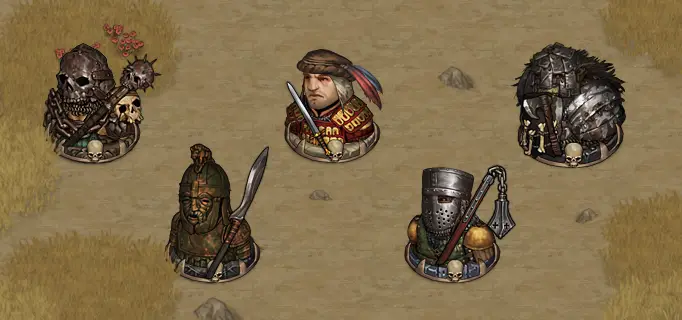He thinks Kobolds are draconic which is correct, I hate the modern "Kobolds = Dog people" interpretation.
Ah yes, very simple. And like most simple answers to anything, almost certainly wrong.
Quotes from commentary here (with a few typos being corrected if I notice and it bugs me enough): https://rpg.stackexchange.com/questions/201139/whats-the-story-behind-kobolds-being-little-lizards
In tradition, kobolds were fey creatures associated with mischief, similar in appearance to gnomes or gremlins, often with the ability to become invisible (like the kobold Pumuckl popularized in a German TV-series).
However, for some unfathomable reason, the kobolds of D&D are little, scaly, humanoid lizards with snouts. What is the story behind that, if it is known?
Fairy things, not lizards. Hm. Looks bad for your thoughts here, The Jester.
Gary Gygax initially added the kobolds in the original without much description of their appearance. From a post by Gygax in an ENWorld forum thread:
In other words, Gygax made D&D's kobolds up for the purpose of creating some little guys that player characters could fight. Accuracy to folklore was a secondary concern. In the AD&D 1e Monster Manual, Artist Dave Sutherland decided on the kobolds' appearance, which influenced later artists. Gygax mentions it in another forum post:Well, all i worked from was Germanic folklore about the forest "little people" called kobolds. All the rest of the material in the game I made up to suit what i deemed as the needs of it. In short, the D&D kobolds are mostly the whole cloth of my imagination.
It was indeed Dave Sutherland that decided to give the kobolds a dog-like visage, likely because I had described gnolls as hyena-like. I had actually originally envisaged them as more impish of countenence, but I went along with the depiction, as it made no difference to the game's play.

D&D started as doglike because of artist's imagination and Master Gygax didn't give a fuck because he just needed a stat block.
The poor old kobold has had an identity crisis that long pre-dates D&D.
In German folklore, the kobold was a house spirit of the 'catch one and it will do the dishes but also play practical jokes on you' type. Like the house-elf, boggart, goblin, or any number of annoying species in the Harry Potter universe.
Or, it's a spirit that lives in silver mines where its practical jokes tend to be more of the 'cause a cave-in that kills everyone' type. Or replace the silver ore with a pretty but useless metal called, naturally enough cobalt. Of course, this was before electricity and batteries where cobalt is not at all useless: which is why today its value is roughly 100 times that of silver.
They might be distant descendants of the kobalos from Greek mythology. Or maybe not - it's a long way in time, space and language from ancient Greece to medieval Germany.
Even in folklore people probably didn't know what a kobold was. Weird.
The transition from fantasy fairy-tale to fantasy wargame came in Chainmail where kobolds are interchangeable with goblins. It actually says "GOBLINS (and Kobolds):" - the only difference is goblins hate dwarves and kobolds hate gnomes. Probably. Garry Gygax had a style of writing that left a lot of the heavy lifting up to the reader.
The early D&D Kobold
Kobold's have appeared in every edition of D&D starting with the white box (D&D0), including Basic.
They did not start out as "little, scaly, humanoid lizards with snouts" - in D&D0 they were "like goblins but weaker". Which, with a certain generosity of spirit, could be referring to the folkloric kobold.
Shitty goblins.
The lizard-dog kobold
In the AD&D (1e) Monster Manual we get:
The hide of kobolds runs from very dark rusty brown to a rusty black. They have no hair. Their eyes are reddish and their small horns are tan to white. They favor red or orange garb. Kobolds live for up to 135 years.
However, the image we have of them gives us a scaley, dog-like humanoid. Perhaps with a suggestion of dragon?
Scaly dog people.
The AD&D 2nd edition Monstrous Compendium gave us:
Kobolds are a cowardly, sadistic race of short humanoids that vigorously contest the human and demi-human races for living space and food. They especially dislike gnomes whom they will attack on sight and in preference to all other enemies. Barely clearing three feet in height, kobolds have scaly hides that range from very dark rusty brown to a rusty black. They smell like a cross between damp dogs and stagnant water. Their eyes glow like a bright red spark and they have two small horns ranging from tan to white. Because of the kobolds' fondness for wearing raggedy garb of red and orange, their non-prehensile rat-like tails and their language (which sounds like small dogs yapping), these fell creatures are often not taken seriously by humans. This is often a fatal mistake, for what they lack in size and strength they make up in ferocity and tenacity.
Scaly dog people.
The draconic kobold
3rd edition has the first explicit link between kobolds and dragons. The description is essentially the same as 2nd edition but it does add "... speak Draconic with voices that sound like yapping dogs." 3.5 edition rearranges the description but provides nothing new.
However, in 2005, Dragon No 332 published the "Ecology of the Kobold" which names them "Brethren of dragons" and tells a creation myth that the kobold god Kurtulmak was the first offspring of Tiamat, hatched early to protect her eggs while Tiamat recovered from wounds sustained battling thieves and that the kobold race was hatched from stolen eggs recovered by the god.
Oh, I see. So the "traditional lizard kobold" is the one that came after for 3E which isn't really D&D at all completely unlike the "modern dog like kobold" which came earlier in D&D and neither of which is the fey folk who knows what traditional kobold. Give back your monocle.







![Glory to Codexia! [2012] Codex 2012](/forums/smiles/campaign_tags/campaign_slushfund2012.png)




























